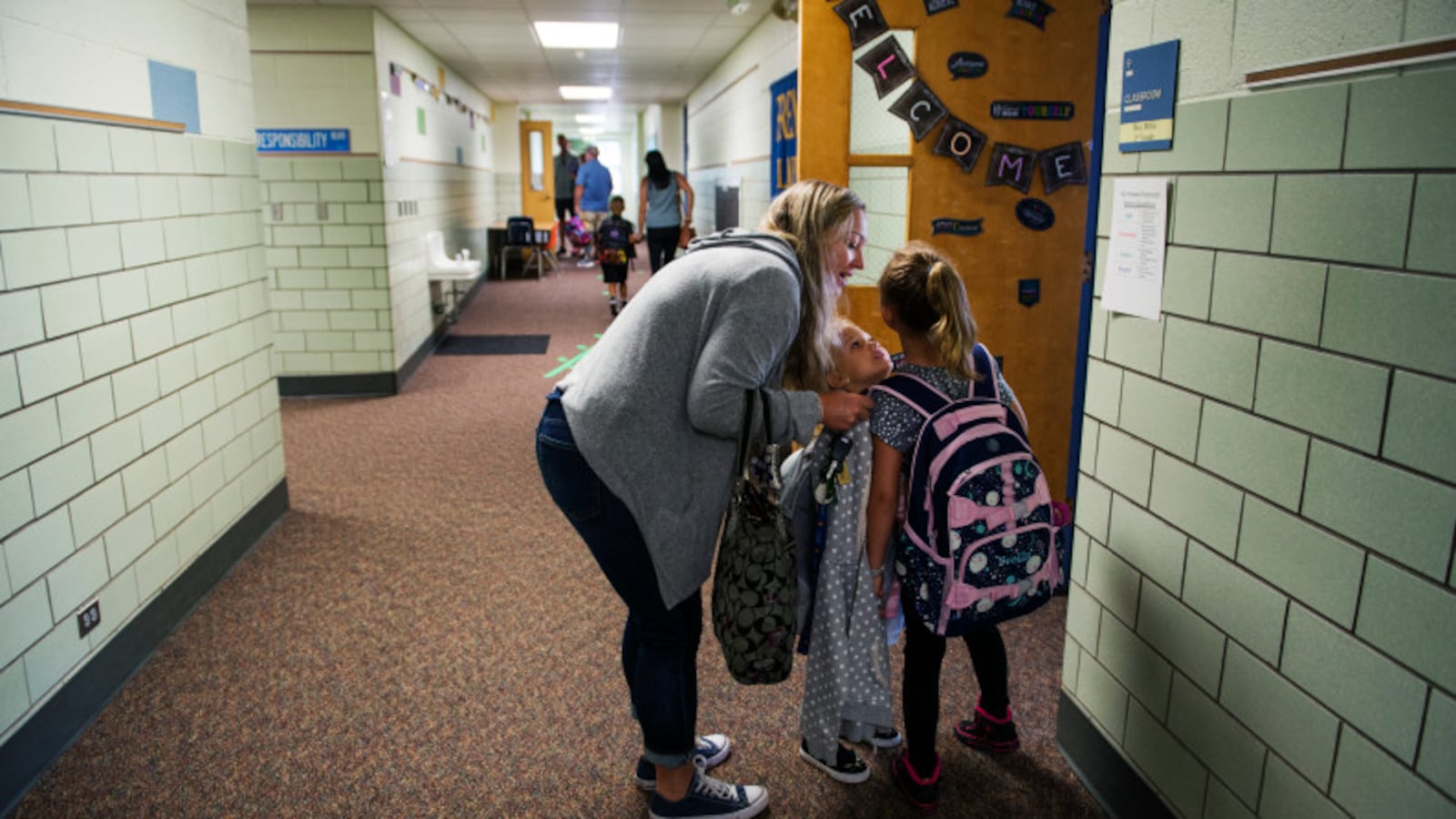Colorado students have had school choice for more than two decades, and hundreds of thousands of families use it every year.
But what exactly is it, and how does it work? We’ve answered some of the most common questions below.
What is school choice?
At its most basic, school choice means students can request to attend any public school in Colorado for free, even across district lines. That’s different from how many adults remember their childhoods, when students simply went to the school closest to their homes. School choice is enshrined in Colorado law.
Which types of schools can families choose from?
There are several types of public schools in Colorado.
District-run schools are the most common. These are traditional schools overseen by the district school board. You might hear them referred to as “boundary schools,” because they were set up to serve the immediate neighborhood. In most districts, all children who live in the boundary get a seat, but children outside the boundary can request to attend.
Innovation schools are district-run schools exempt from certain state and district rules. Waivers allow them to do things like lengthen the school day or hire teachers on separate year-to-year contracts rather than abiding by the teachers union contract. Many innovation schools serve a boundary but are open to all students through choice.
Magnet and option schools are district-run schools with a particular focus. They might serve students identified as gifted and talented, for example, or focus on arts education. Magnet schools typically do not serve a boundary and may require students to meet certain criteria.
Charter schools are public schools run by independent boards of directors rather than by the district school board. Like innovation schools, charter schools have waivers from certain rules. Most charter schools do not serve a boundary, meaning students must “choice in.”
Online schools are public schools where students complete some or all of their coursework on the computer. Online schools can be district-run or charter schools.
What factors should families consider when making a choice?
This depends on what’s most important to the family. Location, academic approach, student safety, and school culture top many families’ lists. Experts suggest families start by looking at their neighborhood school, and, if it doesn’t fit their needs, expand the search.
School tours are a great way for families to learn more about their options. Here are eight tips for what to look for and ask on a school tour. One of the most important things, experts say, is how a school makes you feel: Would the school be a good fit for your child?
How do families apply to schools?
The process is a bit different in each Colorado school district. Several large districts, including Denver Public Schools and Jeffco Public Schools, have online open enrollment systems that allow parents to use a single form to list their top school choices.
In other districts, families apply to each school directly. Some districts use online applications, while others use paper applications that must be delivered in person.
Each district has its own application timeline. Within some districts, individual schools have their own timelines as well. Many districts hold a first round of school choice in December, January, or February, and notify families in late winter about where their child got in.
How do schools decide which students get in?
In many cases, the decision is based on a school’s capacity. If a school has enough seats to take all the students who want to attend, it will often accept everyone who applies.
If a school has 20 open seats but 30 students apply, the school may take students on a first-come, first-served basis, or it may run a lottery. Among schools that run lotteries, some give priority to certain students within that lottery, such as siblings of current students.
Magnet schools may have admissions requirements. At Denver School of the Arts, for example, potential students must audition.
Charter schools are governed by a separate state law that says enrollment decisions must be made in “a non-discriminatory manner.” Most charter schools use lotteries.
What happens to students who don’t get into their choices?
Many schools will put those students on a waitlist. If a spot opens up because an enrolled student leaves, the school will work its way down the waitlist to fill that spot.
Students who don’t get into any of their choices won’t be left without a school. In Denver Public Schools, for example, students are still guaranteed a seat at their boundary school.
Can schools deny acceptance to certain students?
Yes. State law says schools can deny acceptance for several reasons, including if the school does not offer the appropriate programs to meet a student’s special needs. This can be a barrier for students with disabilities or other needs — one that advocates say sets up an inequitable system in which some students have choice and others don’t.
What are some other barriers to choice?
One of the biggest is transportation. Many districts and schools do not offer transportation to students who choose to attend a school outside their neighborhood, meaning it’s up to the student or their family to get them to and from school every day. That can be prohibitive for families without reliable transportation or the time to make a long commute.
Have more questions about school choice? Email us at co.tips@chalkbeat.org!

This article tackles a topic raised during our 2019 Listening Tour. Read more about the Listening Tour here, and see more articles inspired by community input here.

